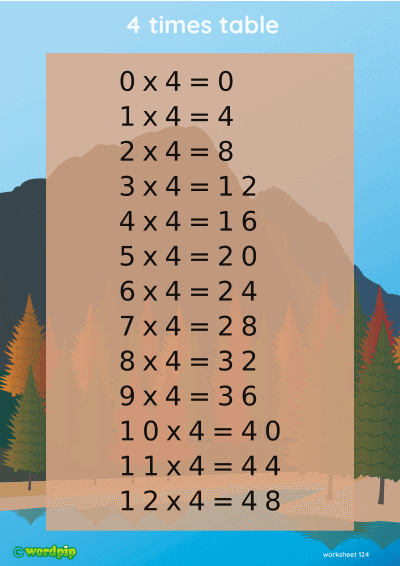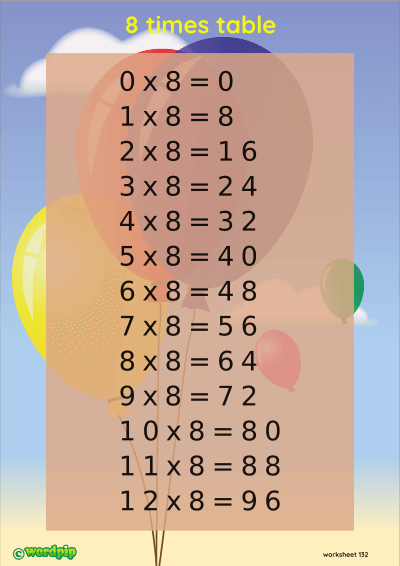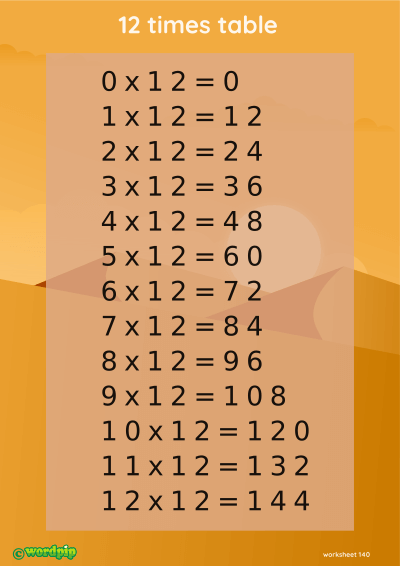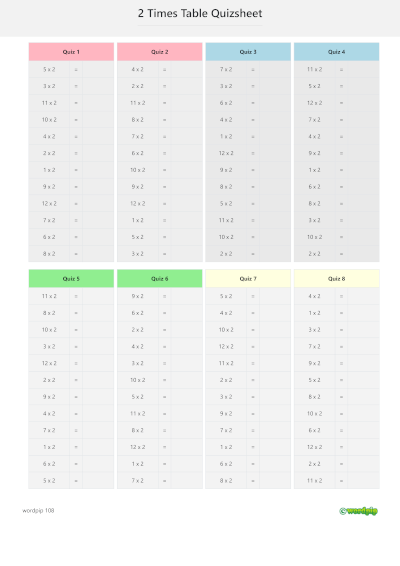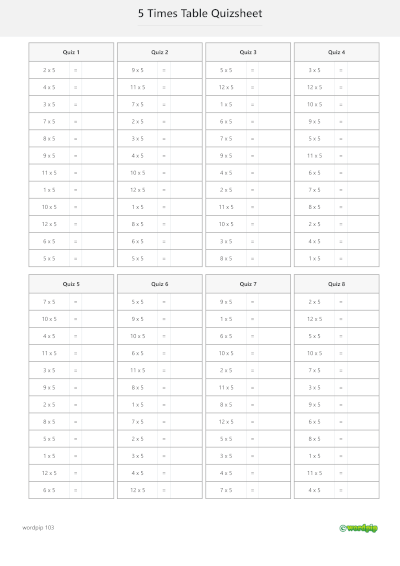Why Are Times Tables Important?
Times Tables Are a Very Important Part of Mathematical Knowledge
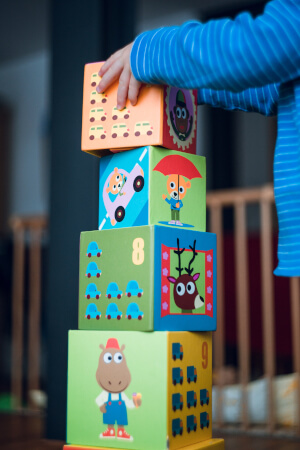
They are the building blocks to furthermore complex mathematics. Children who struggle with them in primary school are likely to fall behind when they begin secondary school. Evidence shows that pupils who are behind in English and maths when they start secondary school will struggle to achieve good grades.
Times tables are a basic form of multiplication. There are studies shown that the earlier a child understands times tables the better they become at maths. This is due to cumulative learning, meaning that learning needs to build on previously learnt ideas and that presenting children with something too advanced will not be effective.
Studies revealed that strong early multiplication skills significantly predicted later achievements in fractions, decimals, and algebra. So it is essential to understand the basics. Children develop mathematical understanding through adding mental connections between ideas by representing the mathematics and reasoning.
Early Predictors of High School Mathematics Achievement (University of Texas at Austin):
This study found that knowledge of fractions and whole-number division in elementary school significantly predicted algebra knowledge and overall mathematics achievement in high school, even beyond factors like IQ and reading skills. https://psycnet.apa.org/record/2012-19535-001Competence with Fractions Predicts Gains in Mathematics Achievement (University of Melbourne):
This study investigated the longitudinal relationship between fraction understanding and math achievement.It confirmed that early competence with fractions predicts both concurrent and future math performance,including areas like decimals and algebra. https://www.researchgate.net/publication/226346995_Predicting_mathematics_achievement
"Without good grades, most young people will struggle to achieve their goals, either for further study or in the world of work."
Patterns are important
If a child knows their times tables they will see patterns and be able to use these patterns in more complicated mathematics. If we take the relatively straight forwards 2 x 4 = 8 for example. Just learning this will help children spot patterns like 20 x 40 = 800, 200 x 400 = 80,000 and 0.2 x 0.4 = 0.8 In knowing the tables and spotting these patterns, it will help to improve mental arithmetic.
Repetition is important
Why is learning by repetition so important? Nobel Prize winner and neuroscientist Dr. Eric Kandel has shown that repeated stimulus and repetition help you to remember things. Memory leads to a strengthening of connections between nerve cells in the brain.
The strengthening of connections makes it easier and faster to recall or use a skill. So practising times tables helps to speed up and mental arithmetic. Working out times tables in the head helps with confidence in numbers and in turn confidence in being able to tackle more difficult mathematical questions.
Practice effectively
This Ted Ed video gives advice on how to practice effectively - start with the simplest steps. Like a performer learning a dance, the mastery of the simplest steps is essential to being able to practice more complex things more effectively.

If we were using this approach for learning times tables then we would look for the beginning steps. The simplest times table is the 2 times table so learn, repeat and master this one first. Times tables help prepare a child for division, long multiplication, long division, fractions, and algebra.
Number knowledge and patterns help with division
Here's how.
Let's take the math question "what is 567 divided by 8?"
You know the link between 56 and 8 from your 8 times table (7 x 8 = 56) 56 divided by 8 = 7 560 is 10 times bigger than 56 therefore 560 divided by 8 is 70 The divisor and the answer are now both 10 times bigger (you haven't just added a zero) The leftover 7 is the remainder. So the answer is 70 and remainder 7
At a more advanced level, you may then go on to show this as a mixed number (a whole number and a proper fraction) 567 / 8 = 70 and 7 eighths or you may show this as a decimal 567 / 8 = 70.875
Fractions
An example of using multiplication tables in fractions is in division facts.
If we are trying to find three-quarters of a number - you would divide the number by 4 and then multiply by 3. 3 quarters of 24 24 divided by 4 to find one quarter 24 / 4 = 6 If we then multiply by 3 to find three quarters this gives us 18 18 is 3 quarters of 24
Check out this paint by fractions worksheet - introduce fractions in a fun way.
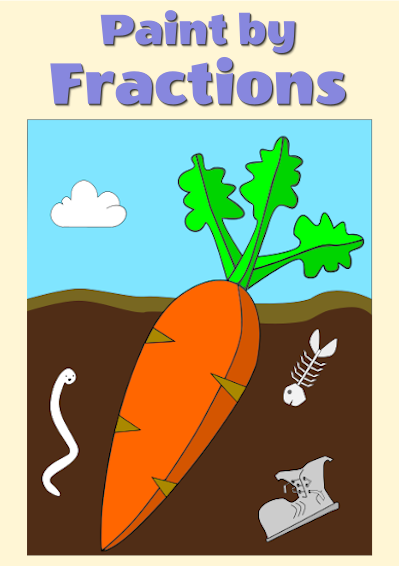
You can get more times table posters, worksheets, and quizzes here on wordpip
How you can make it easy for a child to practice and learn times tables?
By playing games
Flash Cards
Try using Times Tables Flash Cards with Memory Cues. Numbers alone can be difficult to remember - but when combined with a picture they really stick. Each table is themed (eg the Flying Fives), and every fact has a picture, to provide structure and a memory cue. Kids love these imaginative cards - they encourage engagement and discussion. Suitable for anyone learning their times tables
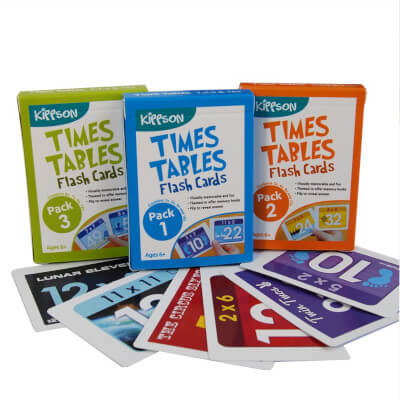
Dice
This dice game can be used to learn times tables. The official rules are as so; players begin by arranging themselves in a circle. You and the player directly across from you each roll a set of 12-sided dice and race to multiply your numbers together. Quickly shout out the answer and pass the dice as fast as you can. The dice are versatile so you can make up your own variations with single players, additions and subtractions.
Snap
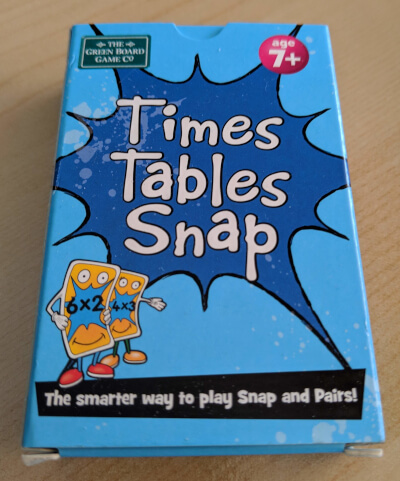 This times table snap game is a great way to add fun to learning times tables.
52 playing cards to have a great game of snap with!
Simply deal the cards equally.
Take turns to turn over the top card and place it on a pile in the middle.
When 2 consecutive cards match - call snap!
The winner is the player who ends up with all the cards.
This times table snap game is a great way to add fun to learning times tables.
52 playing cards to have a great game of snap with!
Simply deal the cards equally.
Take turns to turn over the top card and place it on a pile in the middle.
When 2 consecutive cards match - call snap!
The winner is the player who ends up with all the cards.
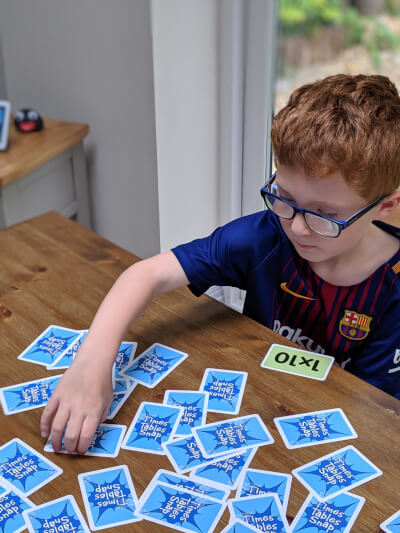
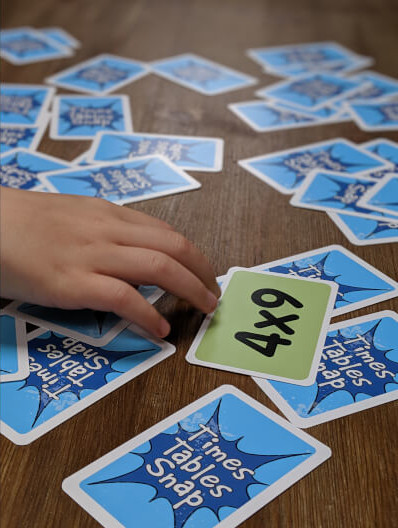
Posters
Put posters up around the house so they are seen on a daily basis.
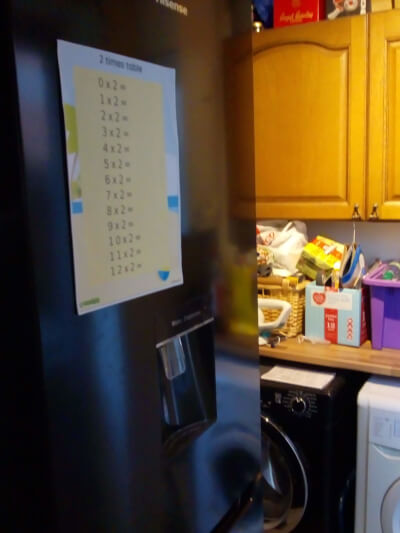
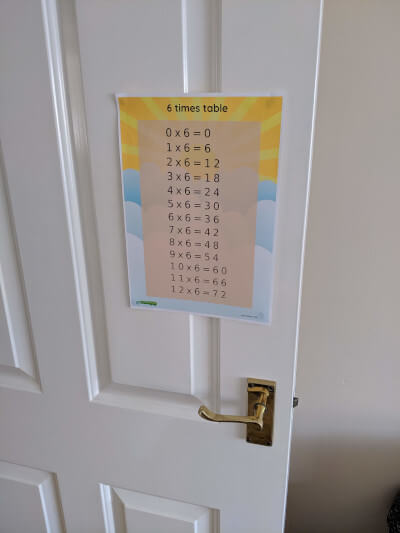
Prompts
Leave sticky notes of simple Times Table questions on various items of furniture.
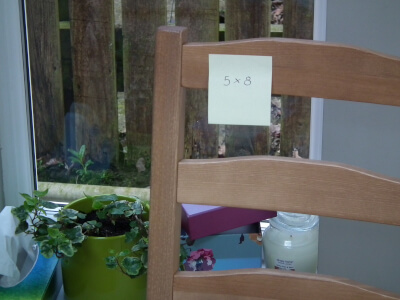
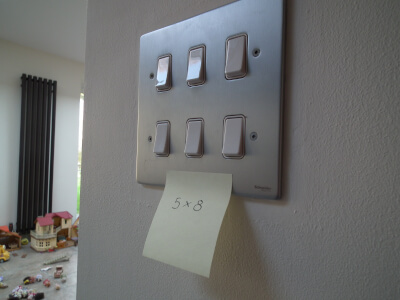
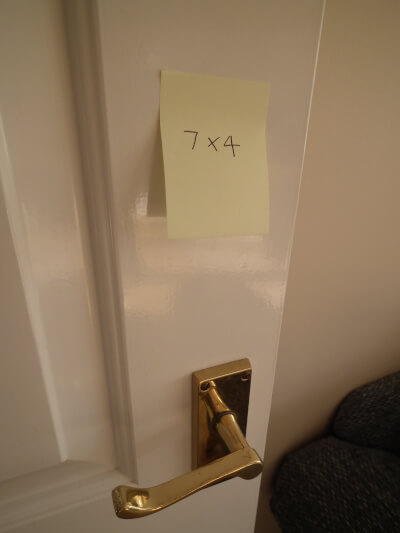
Wall stickers
Reusable and moveable wall stickers are great way to add colour and brightness to learning times tables. Kippson do a great pack of 144. Kids love stickers. These delightful temporary wall decorations encourage engagement with times tables learning. They stick to walls, doors, windows, tiles and more, leaving no significant residue when simply peeled off. Each times table has its own distinct theme to help with quick and confident memory recall (eg Thundery Threes or Seven Seas). Use the pictures as well as their location around the house to help remember the multiplication facts - engage visual memory. Make up stories or rhymes with your child. For those who prefer learning on the move, stick them up and down the stairs and sing or chant as you go up and down. Put tricky tables somewhere you will see them every day (by the shoe rack, or by the toothbrushes?)



Quizzes
Just try asking some quickfire times tables questions - what is 3 x 3? what is 6 x 4?
During car journeys - try spotting a number on a car registration plate or licence plate and doing that times table.

There are some A4 times table quiz sheets here on Wordpip to print out - lots on a page - lots to practice. Here are a couple of examples
You can now generate your own quiz sheets and print them out!
Generate your own 4 times table quiz sheet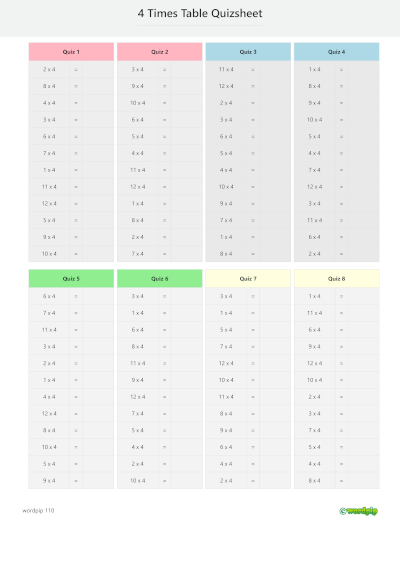
Using LEGO pieces
Building using LEGO is a great way to help learn multiplication tables
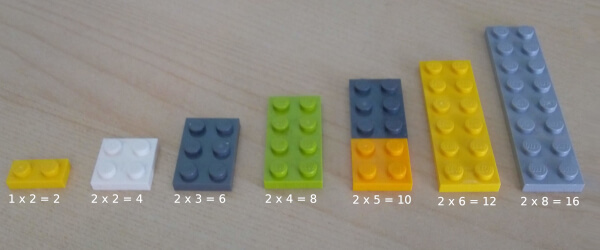
This image shows LEGO pieces can be built up to show a times table. The first one is the 1 by 2 plate (or flat), then the 2 by two plate. Bricks can also be used and interspersed with 'flats' if you are prepared to throw conformity to the wind.
Arrays
An array is a set of items arranged in equal rows or columns. We have a set of shapes in a row quite like a LEGO brick but with pentagons.

This shows 6 pentagons lined up in a row and then another row of 6 pentagons underneath.
2 rows of 6 or 6 columns of 2 This can help to demonstrate 2 x 6 = 12 or 6 x 2 = 12
you can build up various arrays to show the times tables.
Building arrays with LEGO is another way to help demonstrate multiplication Again helping to show multiplication as rows and columns.
Practising adding numbers
Adding numbers or repeated addition helps to reinforce learning of the times tables and solidify the connections between them. For example, 2 + 2 = 4 then plus another 2 is 6 then plus another 2 is 8
2 + 2 + 2 + 2 is the same result as 4 x 2
Practising doubling numbers
In a similar way doubling numbers help to learn the times tables and the connections between them. For example, 3 doubled is 6, 6 doubled is 12, 12 doubled is 24
Here is the example of 2 being doubled 2, 4, 8, 16, 32, 64 You can see the connection between the times tables.
Another quick-fire fun way to help learn times tables. simply roll 2 dice and then ask the question eg what is 4 x 6?
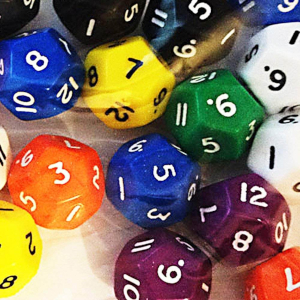
Times tables around the world
In the UK
 From the school year 2019 / 20 all year 4 pupils must sit a mandatory times table test.
From the school year 2019 / 20 all year 4 pupils must sit a mandatory times table test.
The UK national curriculum specifies that pupils should be taught to recall the multiplication tables up to and including 12 x 12 by the end of year 4.
The purpose of the test is to find if pupils can fluently recall their times tables. The UK Government says this is an essential successful future in mathematics.
The test targets the 6,7,8,9 and 12 times tables as these are deemed as the most difficult.
The online multiplication tables check (also known as the MTC check) involves answering mathematical questions such as 2 x 6 = ? Pupils are given six seconds to answer each times table question. There are 25 questions in total. The test is completed online and each pupil's score is reported to the school.
Want to know what age is the UK year 4? Check out school years what are the classes called and what age groups are in them
In the USA
Children are taught multiplication tables which are basically the same as those in the UK but with the numbers reversed - eg 2 x 4 = 8 or 2 x 5 = 10
In China
Times tables are taught in a slightly different way. The tables are up to 9 times 9 but omit any repeated calculations. For example, there is no need to learn the 2 times table past 2 x 2 = 4
This is because you will also learn any other number past 2 in the other tables For example, in the 3 times table 2 x 3 = 6 and in the 4 times times table 2 x 4 = 8
Commutativity
Children are taught to recognize why 3 x 2 and 2 x 3 give the same result. If a child can understand commutativity and have the memorised knowledge from their times tables that 3 x 2 = 6 they do not then need to have learned 2 x 3 = 6 as a separate, stand-alone piece of knowledge.
If you take the times tables and strip out the duplicates you get the following table
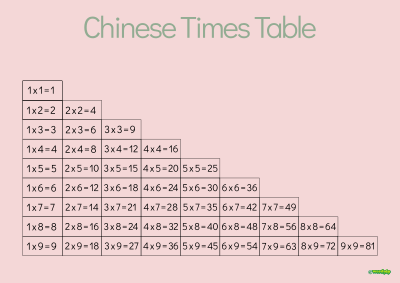
You can dowload a larger printable PDF version of this table here on Wordpip

